Hey there! If you've ever needed to transfer your medical records, you know it can feel a bit daunting. Writing a letter to request this transfer is a key step in ensuring your healthcare continues smoothly. In this article, we'll provide you with a simple yet effective template to make the process easier. So, grab a cup of tea and let's dive in to help you navigate your medical record transfer with ease!
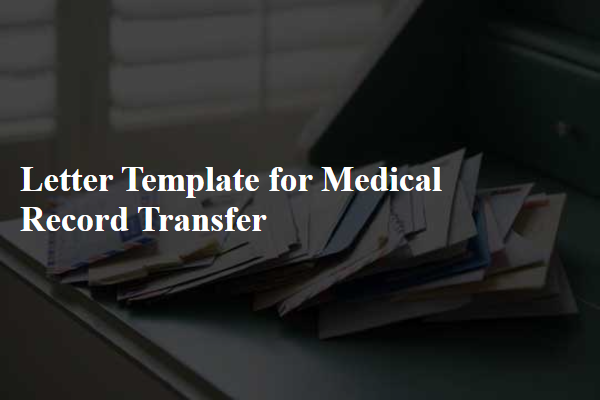
Patient Information
Patient information is crucial for accurate medical record transfer. Key identifiers include full name, date of birth, address, phone number, and medical record number. These details ensure that the patient's health information, including diagnoses, treatment history, and medication lists, is securely and efficiently shared between healthcare providers. Additionally, including authorized signatures or consent forms is essential for compliance with regulations like HIPAA (Health Insurance Portability and Accountability Act), which governs patient privacy and information sharing. Accurate and complete patient information facilitates continuity of care and enhances the quality of medical services received.
Receiving Physician Details
Receiving physician details are crucial for the accurate transfer of medical records, ensuring continuity of patient care. Essential information includes the physician's full name, medical license number, and practice address (including city and state). Contact numbers, both office and fax, and email address are vital for secure communication. Additional data such as the practice's specialty, hospital affiliations, and emergency contact procedures enhance the transfer process. In particular, noting the physician's participation in telehealth services may also aid in coordinating patient follow-ups. Proper documentation of this information streamlines the transition, safeguards patient confidentiality, and facilitates the sharing of pertinent medical history.
Current Medical Overview
Current medical overviews provide a comprehensive snapshot of a patient's health status, including diagnoses, medications, allergies, and recent treatments. This overview typically includes key medical history dates, such as the diagnosis of chronic conditions like hypertension or diabetes, certified assessments by healthcare professionals such as cardiologists or endocrinologists, and medication lists that detail dosages and frequencies. Allergy information indicates specific substances triggering reactions, including medications, food, or environmental agents, which are vital for safe treatment planning. Recent treatments may encompass surgical procedures, hospitalization events, or significant therapeutic interventions, all instrumental in guiding ongoing care by new healthcare providers.
Authorization and Consent
Medical record transfer is a crucial process for ensuring continuity of care and maintaining patient privacy. Authorization forms, typically required by healthcare institutions, outline patient consent for transferring sensitive health information, including medical history, treatment plans, and diagnostic results. Compliance with regulations such as the Health Insurance Portability and Accountability Act (HIPAA) is essential, safeguarding patient data from unauthorized access. The request can specify the recipient's details, such as the healthcare provider's name and address, along with the purpose of the transfer, which may include consultations, referrals, or treatment follow-ups. Patients must sign the authorization, which often includes the date, their full name, date of birth, and contact information, confirming their understanding and agreement to the transfer of their confidential records.
Contact Information
Transferring medical records requires precise contact information to ensure smooth communication between healthcare facilities. For this process, key details must include full name of the patient, associated date of birth (to confirm identity), complete mailing address, phone number, and email address if applicable. The receiving facility's name, address, and specific department contact (such as Medical Records Department) are also crucial for directing the request accurately. Additionally, including a patient authorization signature and additional identifiers such as insurance member number can expedite the transfer process and ensure compliance with regulations like HIPAA (Health Insurance Portability and Accountability Act) for safeguarding personal health information.

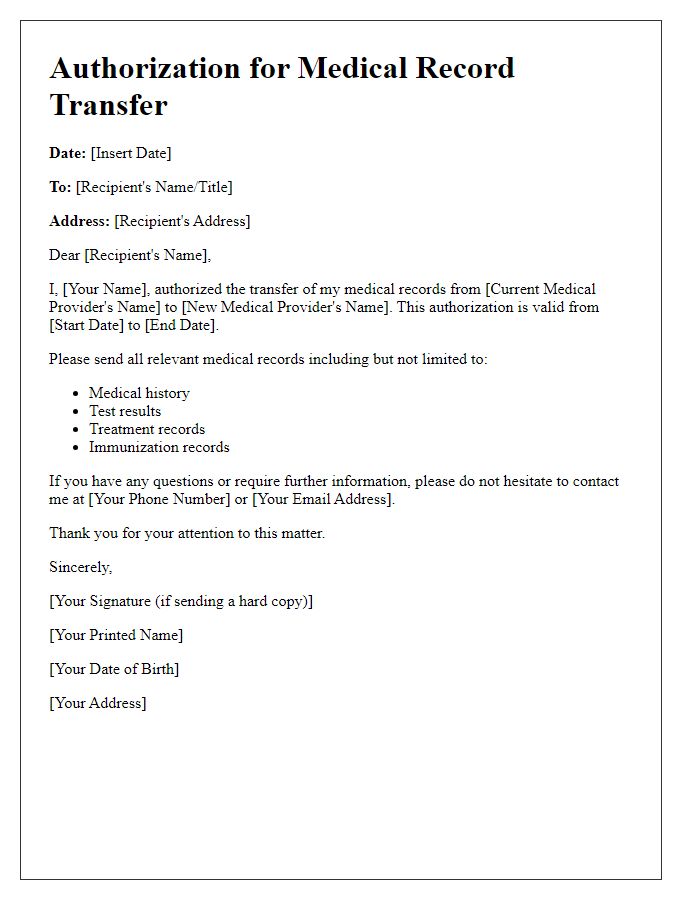
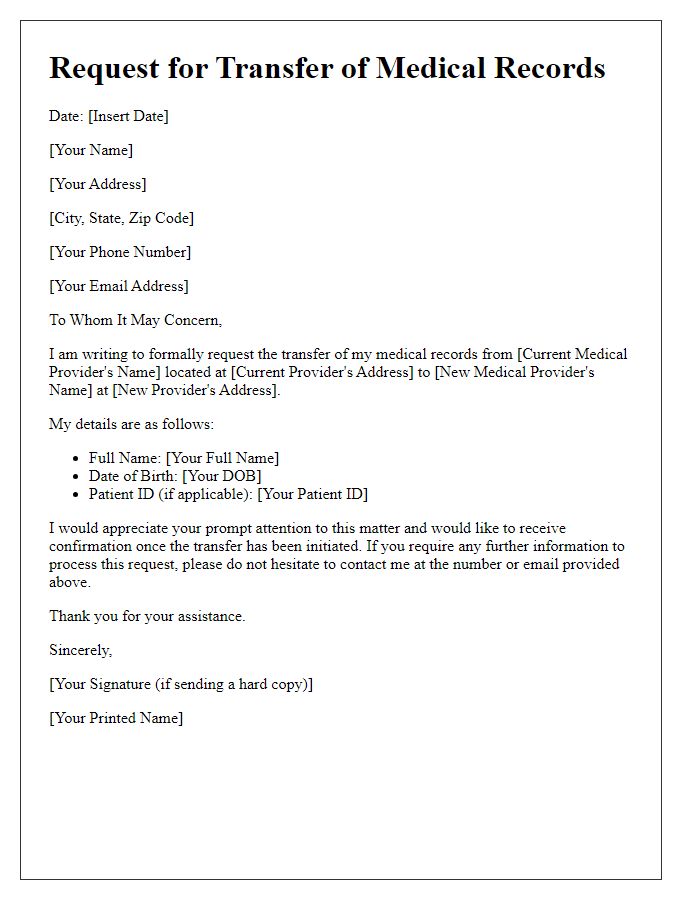

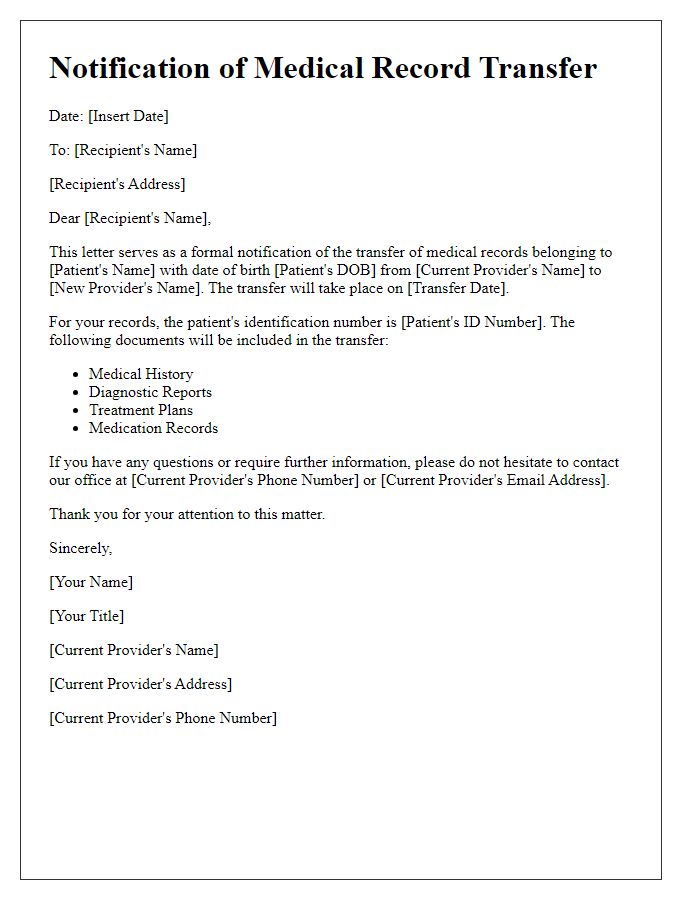
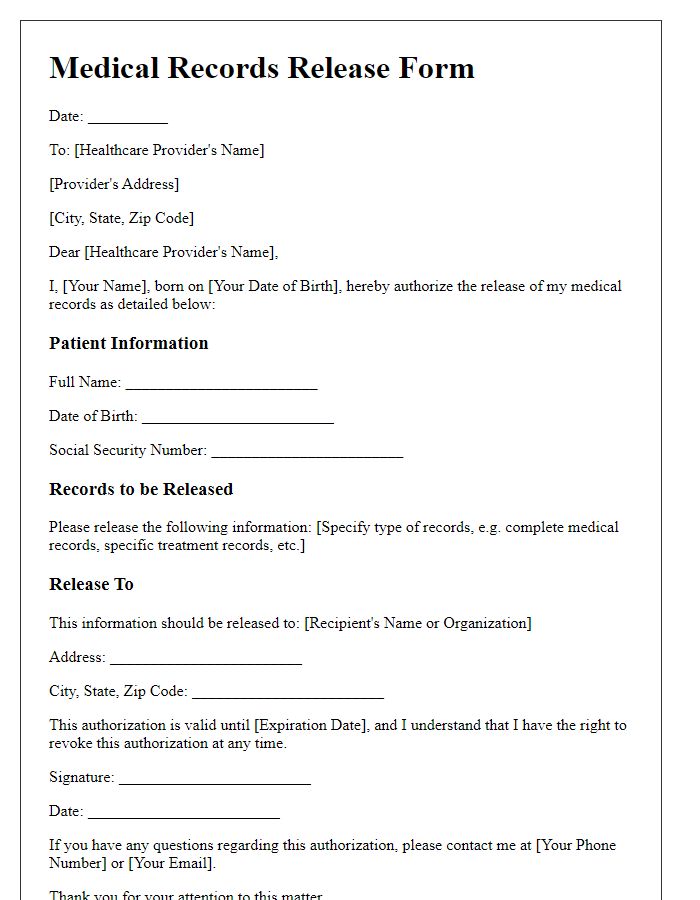
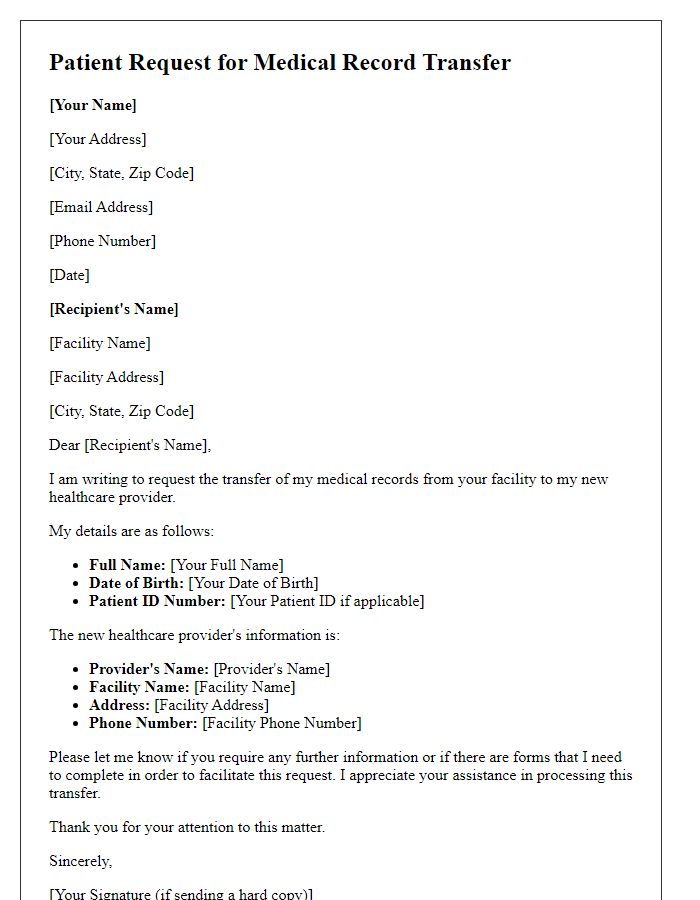
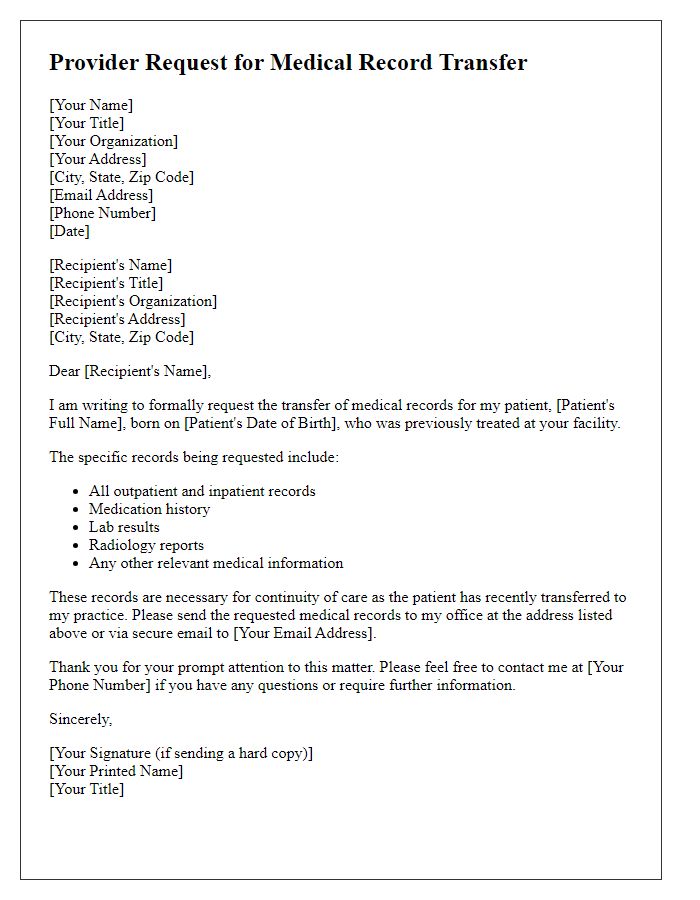
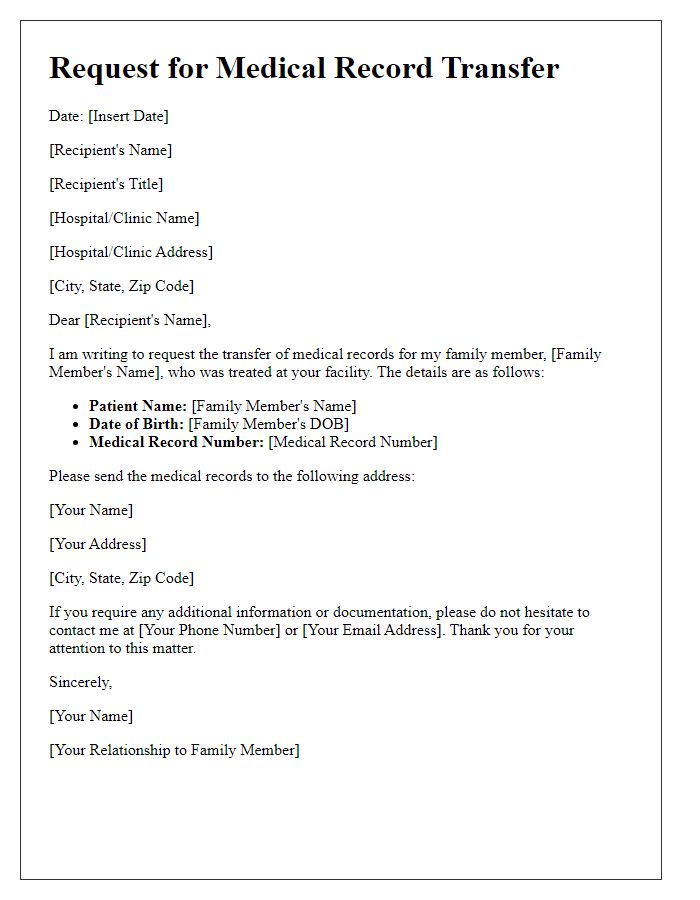
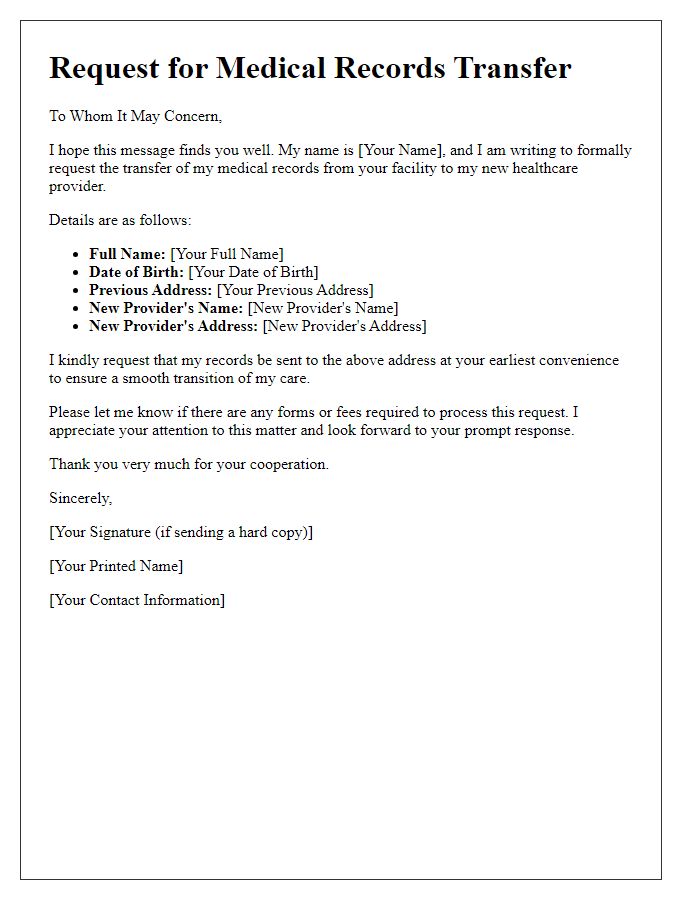
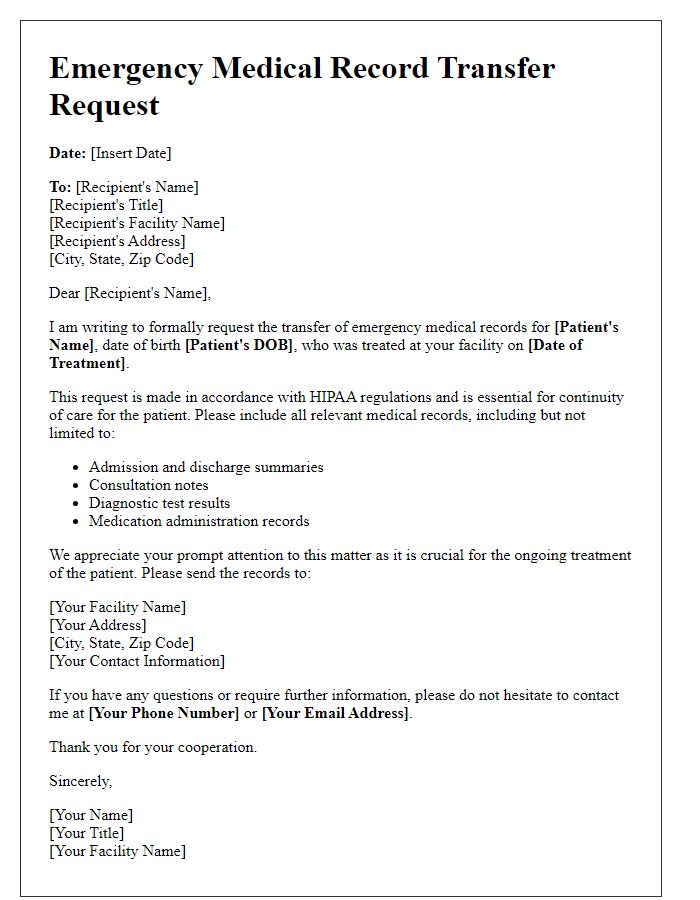


Comments